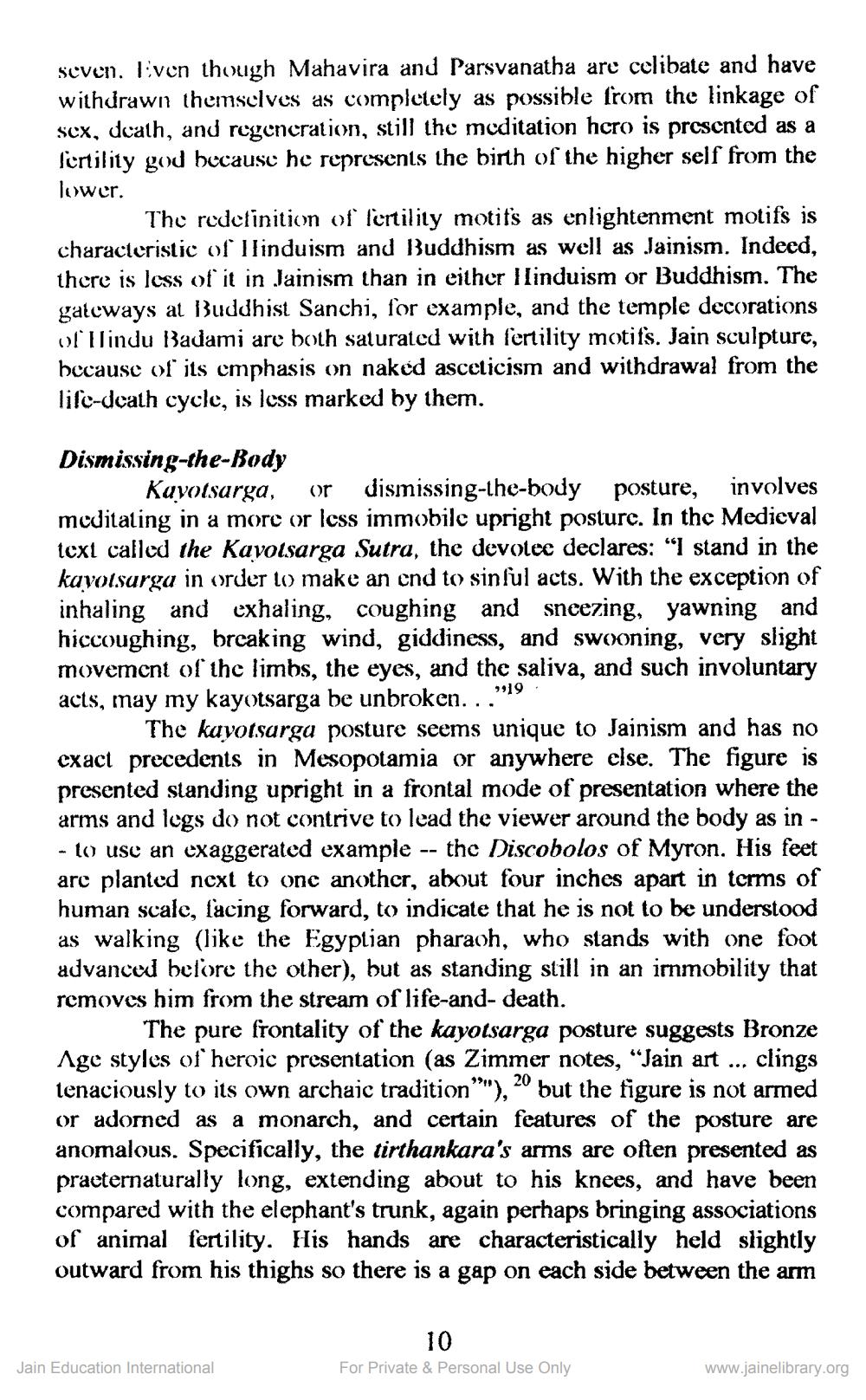________________
seven. Even though Mahavira and Parsvanatha are celibate and have withdrawn themselves as completely as possible from the linkage of sex, death, and regeneration, still the meditation hero is presented as a fertility god because he represents the birth of the higher self from the lower.
The redefinition of fertility motifs as enlightenment motifs is characteristic of Hinduism and Buddhism as well as Jainism. Indeed, there is less of it in Jainism than in either Hinduism or Buddhism. The gateways at Buddhist Sanchi, for example, and the temple decorations of Hindu Badami are both saturated with fertility motifs. Jain sculpture, because of its emphasis on naked asceticism and withdrawal from the life-death cycle, is less marked by them.
Dismissing-the-Body
Kayotsarga, or
dismissing-the-body
posture, involves meditating in a more or less immobile upright posture. In the Medieval text called the Kayotsarga Sutra, the devotee declares: "I stand in the kayotsarga in order to make an end to sinful acts. With the exception of inhaling and exhaling, coughing and sneezing, yawning and hiccoughing, breaking wind, giddiness, and swooning, very slight movement of the limbs, the eyes, and the saliva, and such involuntary acts, may my kayotsarga be unbroken..."
9919
The kayotsarga posture seems unique to Jainism and has no exact precedents in Mesopotamia or anywhere else. The figure is presented standing upright in a frontal mode of presentation where the arms and legs do not contrive to lead the viewer around the body as in- to use an exaggerated example the Discobolos of Myron. His feet are planted next to one another, about four inches apart in terms of human scale, facing forward, to indicate that he is not to be understood as walking (like the Egyptian pharaoh, who stands with one foot advanced before the other), but as standing still in an irnmobility that removes him from the stream of life-and-death.
--
The pure frontality of the kayotsarga posture suggests Bronze Age styles of heroic presentation (as Zimmer notes, “Jain art clings tenaciously to its own archaic tradition""), 20 but the figure is not armed or adorned as a monarch, and certain features of the posture are anomalous. Specifically, the tirthankara's arms are often presented as praeternaturally long, extending about to his knees, and have been compared with the elephant's trunk, again perhaps bringing associations of animal fertility. His hands are characteristically held slightly outward from his thighs so there is a gap on each side between the arm
Jain Education International
10
For Private & Personal Use Only
...
www.jainelibrary.org




